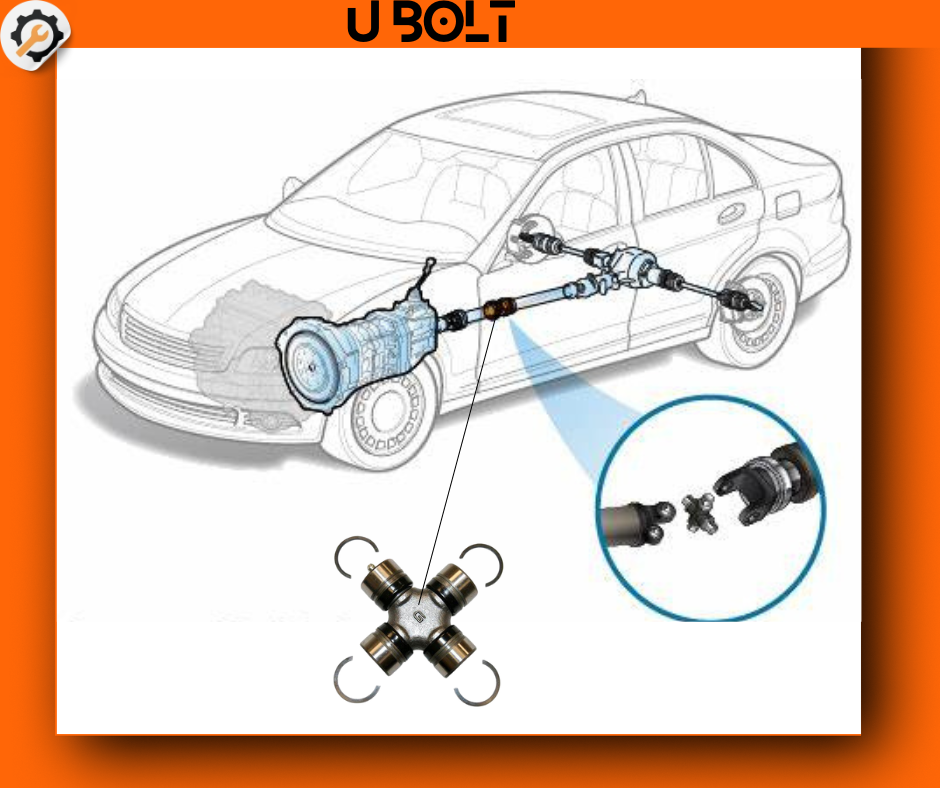Symptoms of a Failing U-Joint in Your Drivetrain

Your car's drivetrain is like the central nervous system of your vehicle, connecting the transmission to the rear axle and allowing smooth movement. At the heart of this system is the U-joint (universal joint), a small but essential part that ensures your driveshaft can flex and spin freely, even as your vehicle moves over bumps and uneven terrain. When a U-joint starts to wear out, it can wreak havoc on your car’s drivability. Here’s what you need to know about spotting the signs of a failing U-joint and how to address the issue before it leads to more serious damage.
What Does the U-Joint Do?
The U-joint connects your vehicle’s driveshaft to the transmission and rear axle, allowing for a smooth transfer of power while your car moves. It’s designed to rotate at various angles, compensating for changes in the alignment of the driveshaft as your car goes over bumps or turns corners. In short, the U-joint ensures that your car's drivetrain can move freely and maintain constant motion, even when your vehicle's suspension flexes.
Signs Your U-Joint Is Failing
Over time, U-joints are exposed to a lot of stress from road conditions, weight loads, and constant motion. While U-joints are designed to last, they don’t last forever. Here are some telltale signs that your U-joint may be wearing out:
-
Clunking or Banging Noises: One of the most common symptoms of a failing U-joint is a loud clunking or banging noise when shifting between gears or when accelerating. This sound often comes from the rear of the vehicle and can indicate that the U-joint is loose or has excessive play, causing it to knock against other components.
-
Vibration While Driving: A worn U-joint can cause the driveshaft to become unbalanced, leading to noticeable vibrations while driving. If you feel a shaking or vibrating sensation—especially at higher speeds—it could be a sign that the U-joint is failing and needs attention.
-
Squeaking Noises: A high-pitched squeaking noise while driving at low speeds is another common symptom of U-joint failure. This noise often indicates that the U-joint bearings are worn out and no longer properly lubricated, causing metal-to-metal friction.
-
Difficulty in Turning or Steering: If your U-joint is in poor condition, you may notice increased difficulty when turning or steering, especially when making sharp turns. This happens because the U-joint isn’t allowing the driveshaft to rotate as smoothly as it should, leading to a loss of flexibility in the drivetrain.
-
Driveshaft Movement: If your U-joint is severely worn, you might even notice visible movement in the driveshaft when inspecting under the car. This looseness can lead to further damage to surrounding components, including the transmission and rear axle.
What Happens if You Ignore It?
If a failing U-joint isn’t addressed in time, the consequences can be severe. A completely failed U-joint can cause the driveshaft to disconnect from the vehicle, leaving you stranded and potentially causing damage to the transmission, differential, and other parts of the drivetrain. In the worst-case scenario, a driveshaft that disconnects while driving can cause loss of control of the vehicle, leading to an accident.
How to Replace a U-Joint
If you suspect your U-joint is failing, it’s important to replace it before it completely breaks down. Replacing a U-joint isn’t a job for the faint-hearted, but if you’re handy with tools, here’s a quick overview of the process:
-
Lift the Vehicle: Safely lift the car and secure it on jack stands. Make sure to have enough room to work under the vehicle.
-
Remove the Driveshaft: Use a wrench to disconnect the driveshaft from the transmission and rear axle. Once removed, take note of how the U-joint is positioned for reassembly.
-
Remove the Old U-Joint: Use a U-joint press tool or hammer to carefully remove the worn U-joint from the driveshaft. Be sure to inspect the driveshaft and yokes for any damage.
-
Install the New U-Joint: Press the new U-joint into place, ensuring it fits snugly and rotates smoothly without excessive play. Reapply grease to the bearings for optimal performance.
-
Reinstall the Driveshaft: Reattach the driveshaft to the transmission and axle, ensuring everything is aligned and torqued to the manufacturer’s specifications.
-
Test the Vehicle: Lower the vehicle and take it for a test drive to ensure the new U-joint is functioning properly and the driveshaft moves smoothly without vibration or noise.
Keep Your Drivetrain Running Smoothly
A failing U-joint may start with minor annoyances like clunking noises or slight vibrations, but if left unchecked, it can quickly escalate into a serious and costly repair. Regularly inspecting and maintaining your U-joints is crucial to keeping your drivetrain—and your car as a whole—in good condition.
At Sparesworld, we stock a range of high-quality U-joints and drivetrain components to keep your vehicle running smoothly. If you’re unsure about diagnosing or replacing a failing U-joint, our expert technicians are here to offer advice and guidance. Visit us online or contact our team for personalized support to ensure your car’s drivetrain stays in top shape.

 Loading..
Loading..